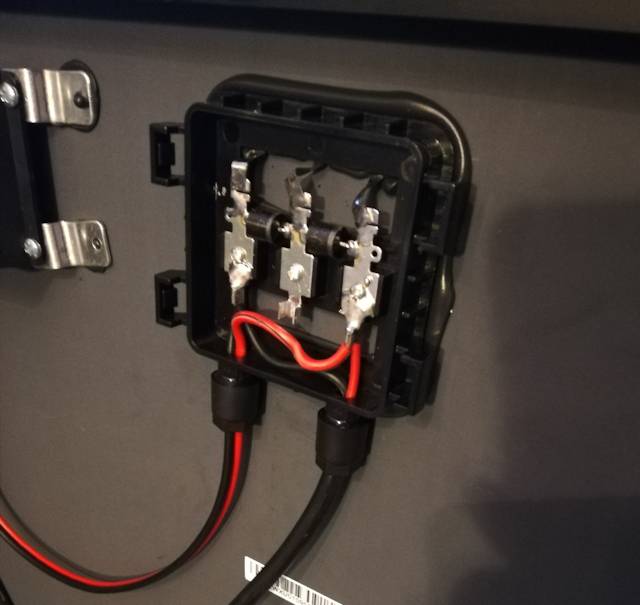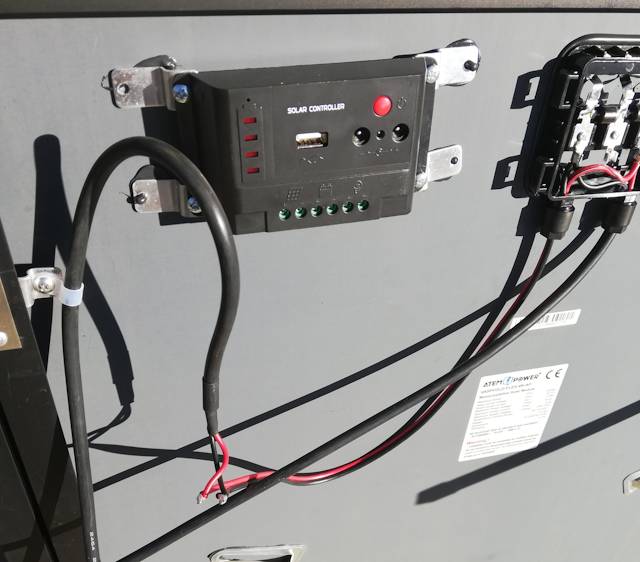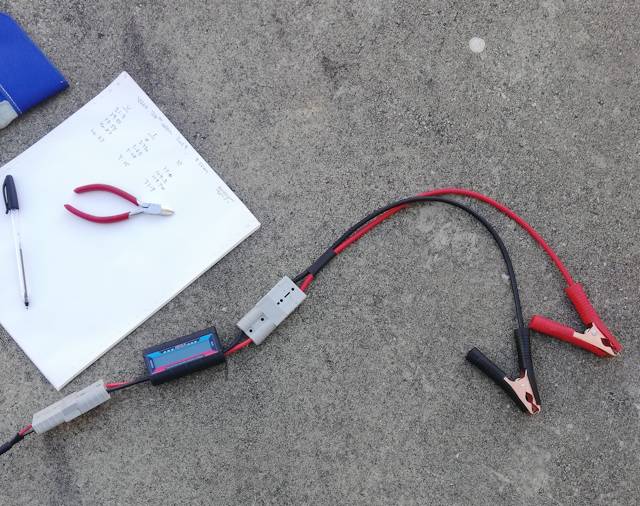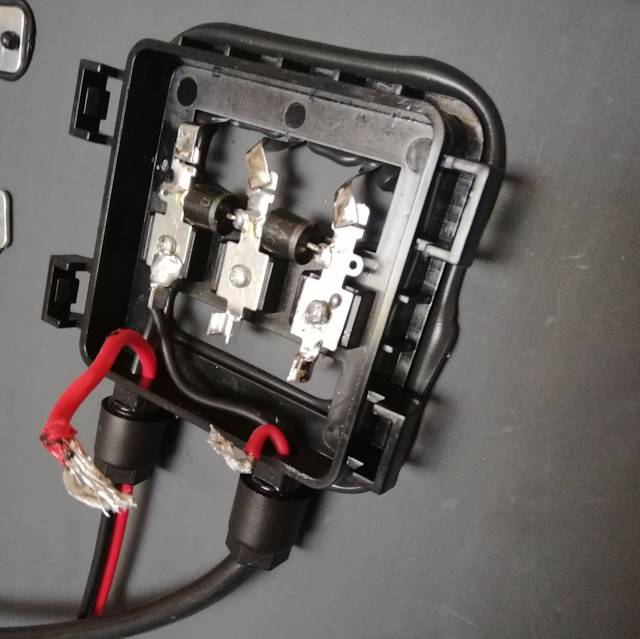Atem Power 250W solar panel is a disappointment
EDITED 2019-05-19: Improved testing of 250W panel
EDITED 2019-04-27: Edits in bold red (for legal reasons)
I posted about a 250W folding solar panel that I purchased from XXXXXXXX, via eBay:
http://bkhome.org/news/201904/large-250w-solar-panel-for-camping.html
Very cheap, only AU$288 including delivery.
It arrived a couple of days ago. The sky was a bit murky yesterday,
but today brilliant sunshine, totally blue sky, not even a wisp of
cloud, ambient temperature cool, low 20s, location Perth WA, date Wednesday April 24 2019. I set it up about 10.00am, but
was only getting about half of the expected current. Hmmm.
I am a retired electronic engineer, and I once worked in solar energy
research, so I am competent in this field. Of course, I had to
investigate further. This is a folding panel, and each side has a
junction box. It is easy to pop off the covers by inserting a
screwdriver:

Standing at the back of the panel, this is inside of the right-hand junction box:

...the left-hand panel is connected in parallel to the right-hand panel, and output then goes to the solar regulator:

...what I have done here is removed the wires from the regulator,
bypassing the regulator. The solar panel now goes directly to the output
cable. At the other end of the cable I used nichrome wire as a
resistive load. A 150A current-voltage-power meter is plugged in:

I used a digital multimeter to confirm that the in-line 150A meter
was reasonably accurate, yes it is. That is also a recent purchase, so
at least that works!
The peak-power point was somewhere between 18.55V @ 5.65A (104.8W)
and 16.87V @ 7.08A (119.7W). Yep, only about half what it should be.
Obvious next step is to separate the panels. I disconnected both panels:

...with a jumper lead, I can now connect either panel to the load.
The right-hand panel gives about 3.5A at the peak power point. Drawing more, bringing it down to 11.64V get 4.69A.
The left-hand panel also gives about 3.5A at peak-power, and I loaded it some more, down to 10.98V at 4.69A.
As a final check, I also measured the short-circuit current out of
each side, directly on the junction-box terminals, and yeah, only about
4.7A from each (measured mid-afternoon, with the sun a bit lower in the
sky. Midday it would have been a tad higher).
So, yeah, they are crap panels, giving less than half of that
claimed. They have labels on the back of each side, stating peak power
at 18.4V @ 6.8A and short-circuit current of 7.09A.
The labels specify sun insolation (intensity of the sun) at 1000W/m2
and cell temperature of 25 degrees C. The sun intensity would have been
about that for my measurements. In the sun, panels get hot, so the cell
temperature is going to be well above 25°C, and a rough guide is power
drop of 0.45% per degree rise. So, it would be reasonable to expect a
panel rated at 250W to give about 200W in practical use.
The problem is, this overstating of power output is endemic to many of the cheap panels from China. What to do? Something should be done, I should report this somewhere, but what government dept would be appropriate?
The panel that I purchased was from an Australian business, and they have an obligation not to do false advertising.
EDIT 2019-05-19:
I have a duty to be as accurate as possible when testing solar panels, and to this end have improved the testing setup, with temperature and solar-insolation measuring instruments, a more gradually-variable resistive load, and attention to details (such as making sure the panel is oriented optimally toward the sun, rather than its default angle). A follow-up test has now been conducted, alongside two other panels for comparison:
http://bkhome.org/news/201905/measurements-for-three-solar-panels.html
Tags: nomad
